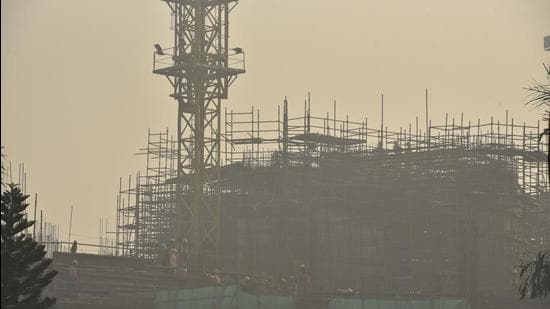With list of dos and don’ts, Delhi pollution body asks residents to join air pollution fight
The list, which uses pollution level benchmarks similar to the scales of the Supreme Court-mandated Graded Response Action Plan, is an advisory for the public.
To encourage public participation in the Capital’s fight against pollution, the Delhi Pollution Control Committee (DPCC) has released a list of dos and don’ts that people can follow according to the air quality of the city at any point of time.

A senior DPCC official said that the list, which uses pollution level benchmarks similar to the scales of the Supreme Court-mandated Graded Response Action Plan (Grap), is an advisory for the public.
Also Read | Delhi’s pollution drops to 7-day low but stays in ‘very poor’ zone
“Delhi usually sees high pollution levels during the winter season and over the last few days, the air quality in the city has slipped into the ‘severe’ zone on several days. While the government agencies have a set action plan to follow when the air quality crosses a certain stage, if the public also participates in the government’s fight against pollution, we will be able to get better results,” said the official.
The list suggests that when the pollution levels in Delhi reaches the ‘moderate to poor’ category, which means the PM 2.5 levels (ultrafine particulate matter with diameter less than 2.5 micrometres) are between 6µg/m3 and 120µg/m3, or the PM 10 levels (coarse particulate matter with diameter less than 10 micrometres) are in the range 101-350µg/m3, people should adopt measures such as keeping engines of their vehicles properly tuned, maintain proper air pressure in tyres, keeping the pollution under control certificates of their vehicles updated, turning the ignition of their vehicles off when waiting at red lights and not dump garbage in open spaces.
Also Read | Cocktail of slow winds, stubble fires gives Delhi its worst November AQI
Similarly, when the pollution levels are in the ‘very poor’ category — PM 2.5 levels in the range 121-250µg/m3 or PM 10 levels in the range 351-430µg/m3 — the general public is advised to minimise the use of private vehicles and use public transport, ensure that the air filters of their vehicles are regularly replaced and avoid undertaking local construction activities such as repairs and extensions.
The list says that when the pollution level hits ‘severe’ (PM 2.5 levels greater than 250µg/m3 or PM 10 levels greater than 430µg/m3) the general public is advised to carpool, walk, cycle and use public transport; work from home if possible; not use wood or coal for heating; owners of independent houses are advised to provide heaters to security guards to prevent open burning; and combine errands to reduce trips.
BS Vohra, president of East Delhi resident welfare association joint front, said that the residents group is also conducting awareness drives to encourage residents to use public transportation and refrain from garbage dumping and burning.
“It’s good that the government is creating awareness but they should also promote action. They should conduct meetings with the RWA where they should listen to what we have to say and we will also take note of their side. A document must be prepared based on this discussion and action must be initiated based on this,” Vohra said.
Anumita Roychowdhury, executive director (research and advocacy), Centre for Science and Environment, also said that public participation is essential to ensure that pollution control measures yield maximum benefits.
“Government agencies and public will have to work together to control pollution. The begining of this will have to be creating awareness so that people know the impacts of air pollution. Compared to a decade ago, public knowledge has increased, now there is a conversation around pollution and its impacts. The more we involve citizens, the more successful would the preventive measures be,” Roychowdhury said.
November has been the cruellest month this year in Delhi, with 11 days showing severely polluted air on the monitors of Central Pollution Control Board (CPCB), the highest since detailed records have been maintained by the pollution watchdog.
Stay updated with all top Cities including, Bengaluru, Delhi, Mumbai and more across India. Stay informed on the latest happenings in World News along with Delhi Election 2025 and Delhi Election Result 2025 Live, New Delhi Election Result Live, Kalkaji Election Result Live at Hindustan Times.
Stay updated with all top Cities including, Bengaluru, Delhi, Mumbai and more across India. Stay informed on the latest happenings in World News along with Delhi Election 2025 and Delhi Election Result 2025 Live, New Delhi Election Result Live, Kalkaji Election Result Live at Hindustan Times.






